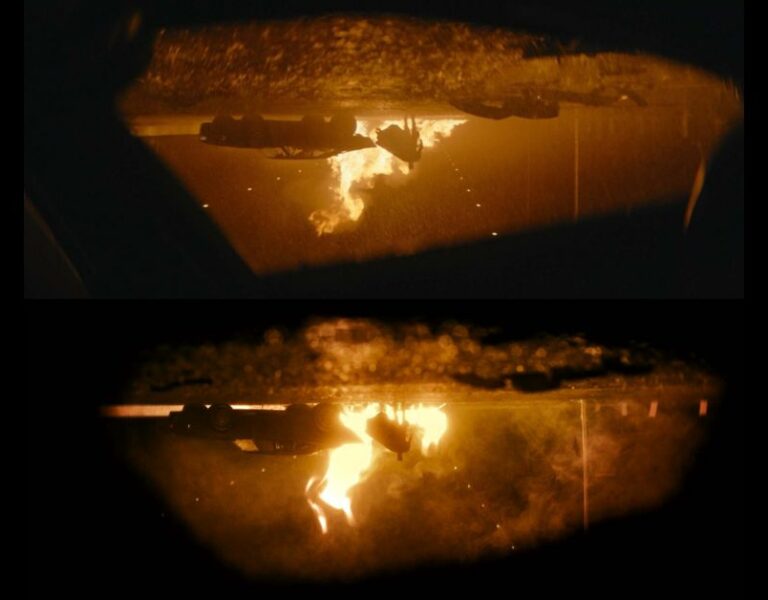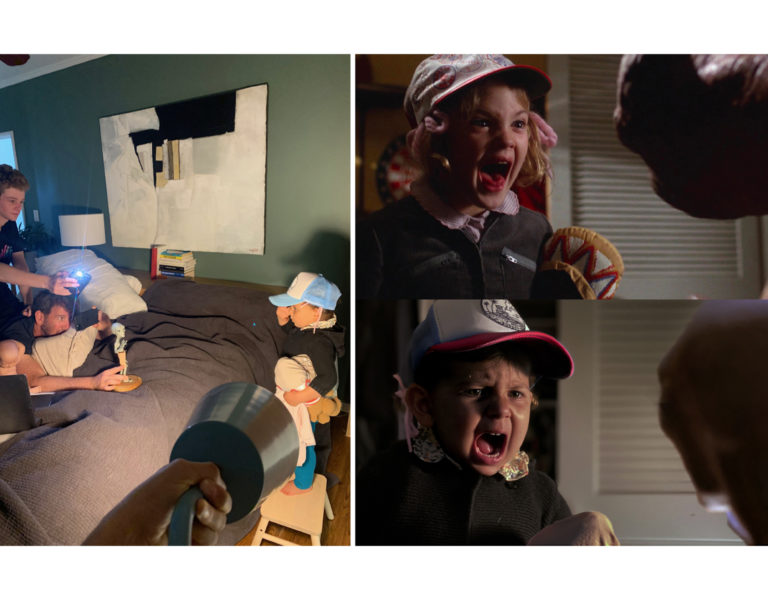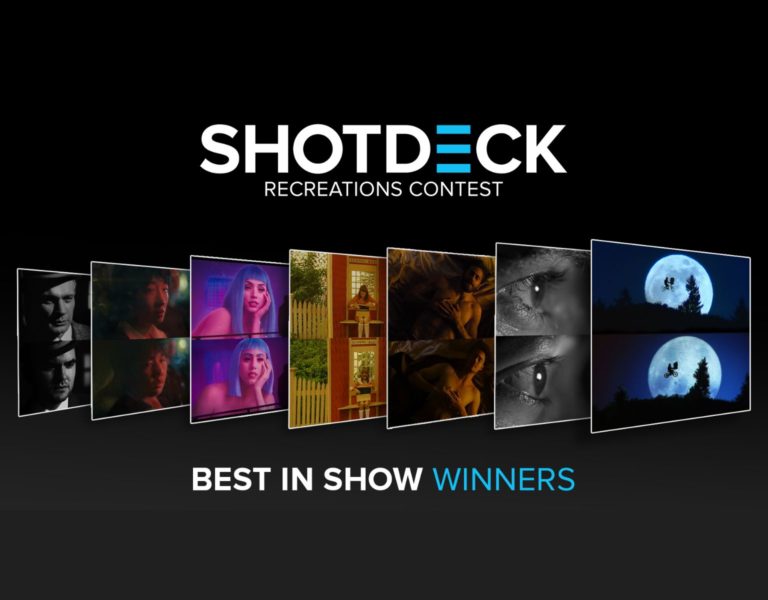The ShotDeck Recreations contest was dreamed up during the first Covid-19 lockdown, when Oscar-nominated cinematographer Lawrence Sher ASC and his wife, Hema, recreated film stills using household items as props, family members as actors, and their cell phones for cameras. Now, the winners of the 2022 ShotDeck Recreations contest have been rewarded with over $30,000 worth of prizes including cameras, lenses, lights and support from Sony, Zeiss, Blackmagic, Aputure, Rosco, SmallHD, Tiffen, and British Cinematographer.
The free competition saw entrants select a frame from the 300,000-plus stills in ShotDeck’s high-definition movie images library and recreate it, DIY-style. This year over 800 entries were received from around the world!
The November issue of British Cinematographer magazine will spotlight four of the competition’s amazing finalists, showcasing their creativity and inspirations behind their recreations. This time 22-year-old Nikita Vvedenskiy reveals the shooting process behind his The Neon Demon submission.
Don’t forget, you can see these shots and more on ShotDeck’s website (which offers a free two-week trial for new members).
Can you tell us a little bit about your background in filmmaking?
I lived in Moscow, Russia, and now I have moved to Hamburg, Germany. I was born in a family of businessmen, the only son. My parents wanted me to continue their business. That is why I went to Moscow State University to study economics. I was not a big fan of my education and my future profession, it was not my spirit, but I tried to find myself there.
I watched films in my free time – not only for fun, but also to try and analyse how cinematic language works. I started deconstructing movie scenes by writing down my observations in a notebook. But very soon, I realised that I lacked the theory and knowledge to systematise my observations, so I began to dive into the world of film books.
I have read books by the likes of Blake Snyder, Syd Field and more. I began to apply the theory in practice – reading scripts and trying to visualise my version, experimenting with photography and editing. After this I had no way back – I had found my spirit. That is why I decided to connect my education and my dream by writing my graduating diploma about “Distribution of Russian cinema on the domestic market”. I decided to work on set to understand cinema not in theory but in practice. From that moment everything was like a dream.
I managed to get in touch with Russian actor Alexei Serebryakov (Leviathan, McMafia), and asked him about the possibility of getting on set. I was very lucky to find out that Alexei was supposed to star in a new movie. So, I worked as actor’s assistant on the movie Montevideo Unit and was interviewing members of the team for my diploma. After that, the producer of the movie, Sergei Bobza, invited me on another project as coordinator. I felt in love with the cinema, the process, the atmosphere in both of these projects, but I could not figure out what department I love the most.
I have decieded to try to get acquainted with professional cinema equipment. I worked at the Gerasimov Institute of Cinematography. There I was working with students who were learning cinematography there. New members of the industry have a wonderful opportunity to work with professional cameras and light (like ARRI) there. I was working and learning. I got experience as 1st AC, 2nd AC, gaffer, best boy, dolly etc. When I had free time I could easily take cameras for tests, test light set-ups and so on. So I have decided to go to university as cinematographer.
Before 24 February [the Ukraine invasion] I wanted to study cinematography in Moscow, but I have since moved to Germany with my wife. I now live in Hamburg, learning German and working as an editor. I started to learn colour grading and am preparing to apply to DFFB or Filmuniversität Babelsberg in Berlin. I am looking for new connections and I want to return on set as soon as possible.
What inspired you to enter the ShotDeck Recreations contest?
At first, I was not sure about it, because I knew that Shotdeck is a big platform used by professional filmmakers. I did not have contacts and equipment in Germany, but my wife inspired me. She told me that she is my team and she would help me with everything I needed.
Secondly, I needed more works for my portfolio for my university admission.
Moreover, I have started colour grading and I wanted to practise my knowledge. ShotDeck Recreations was a good opportunity for it.
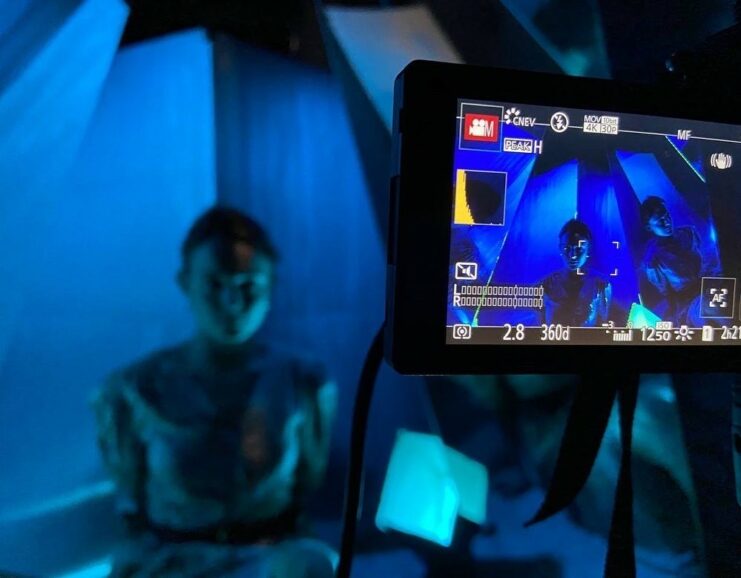
How did you decide which shot from ShotDeck’s library to recreate? What was it about that shot that caught your attention?
Actually it took me most of the time – I was searching for my shot for four days. I assessed what shot I could do in given circumstances – equipment, number of people, time, location, set and so on. I knew that I want to experiment with light and reflection. I was absolutely sure that it would not be extreme close up, because I only had wide zoom lens (Olympus 7-14mm). My shot is from The Neon Demon (director Nicolas Winding Refn, cinematographer Natasha Braier ASC ADF). Before ShotDeck Recreations I watched the movie three or four times, and every time I was very impressed with the director’s and cinematographer’s work. I have decided to take this shot because first of all in the movie this frame shows the internal change of the character, the transition of the character from one world to another and this frame perfectly conveys this. Second of all, it was a big challenge to experiment with such light set up in in given circumstances.
Before you started work on your submission, what challenges did you anticipate? Were there any unexpected challenges that arose during the production process?
There were many challenges. Some of them I was expecting, but even then it was necessary to analyse errors, think over their solutions and experiment. Firstly, I had to recreate the background. In the original shot you can see there are some kind of metal sheets. I could not get the right height and width of metal sheets to cover all the background of the shot, so I had to find a perfect angle of mirrors. Secondly, reflection itself. I knew it was hard to control reflection, but I did not realize how difficult it is to do it with four reflective surfaces at the same time. Thirdly, equipment. I did not have enough equipment, but it was interesting and fun to experiment with what I had on hand. Fourthly, conditions. The weather was extremely hot and my camera was turning off every 20 minutes. Furthermore, Knoperss, my cat, kept coming on set, playing with her reflection and ruining everything!
Where did you shoot your submission?
My submission was shot in the communal attic of our house – I was shooting on the rooftop. A couple of times the neighbours came to the attic while I was preparing the set. They would greet me and then quickly leave!
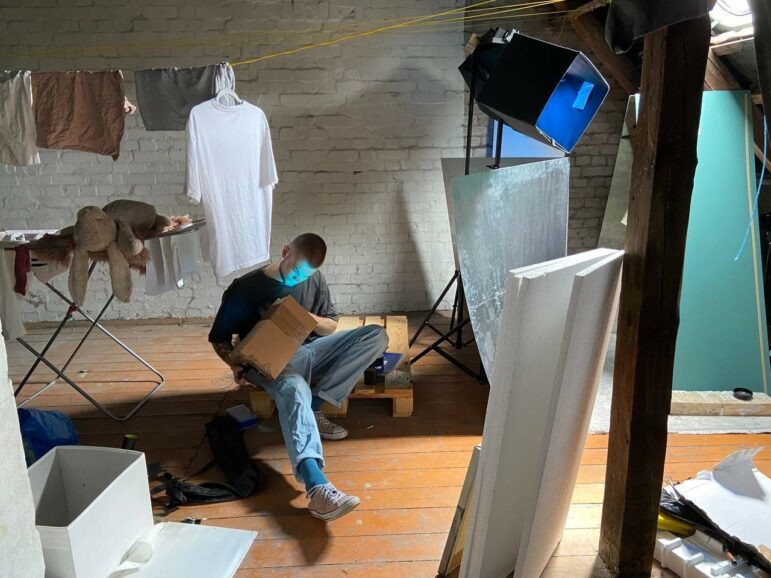
What equipment did you use?
My equipment was:
Camera: GH5; Lens: Olympus 7-14 pro; tripod: Manfrotto Compact Actio; 4 light sources: 2 Walimex Pro mini LED and 2 Walimex Pro LED; the cheapest blue filters from Amazon; softboxes made of Ikea shelf cases and cardboards; foam sheets; gaffer tape; a bath curtain.
Who were the different members of your team and what were their roles?
I had the best team, including my wife Valeria (the good cop!), who was helping me from the beginning. She motivated me, assisted with shot choice, and helped with finding solutions and setting everything up. She was very patient and caring . It would not be any result without her help.
My cat Knoperss was the bad cop. She motivated me too, but she used different methods. She was crushing, jumping, overturning, pushing everything. She used strategy “destroy everything and start over”. I still do not think it was the best strategy on set…
Can you take us through the shooting process?
Shooting was not as long as the pre-production process. We were shooting at night because I did not want any light from outside. We tested everything before shooting – the camera and the set were ready. I spent all day fixing everything up. We did the costume and the make-up at night and went on set. While shooting I did some fixes with light intensity. In some shots I asked Valeria to move in different direсtions just to have more choice for post-production.

How many takes/shots did the process entail and how long did it take to get the perfect shot?
Probably I took 20 to 30 shots with different camera settings to choose during post-production. I did not change the camera position or angle a lot, because I fixed its spot before.
Is there anything you wish you’d done differently?
There are so many things. My shot is far from being perfect recreation.
- I do not like the contrast, color, texture and the light of the background;
- The reflection of mirrors in the background is so far from being perfect – the angle is different;
- The key light is too intense under the eyelids;
- The aspect ratio is different;
- The ratio of object to frame is different;
- The lens is different.
And many more.
How did it feel to be announced as a finalist of the contest?
I experienced a whole range of emotions. I was excited, relaxed, worried, happy, pleasantly surprised and so on. But the most important thing was that I realised that I am on the right path and that I have made the right choice about my profession. Thanks ShotDeck for the opportunity and see you on set!

